Like the enduring appeal of a classic novel, the wrap dress has woven its way through fashion history, tracing back to ancient times. You might be surprised to learn how this simple yet transformative garment evolved from traditional Chinese garments to become a symbol of empowerment in the 1970s. As you explore its design characteristics and cultural significance, you'll uncover the reasons for its lasting legacy in women's wardrobes. What makes this dress so timeless, and how did it influence the evolution of women's fashion?
Historical Origins
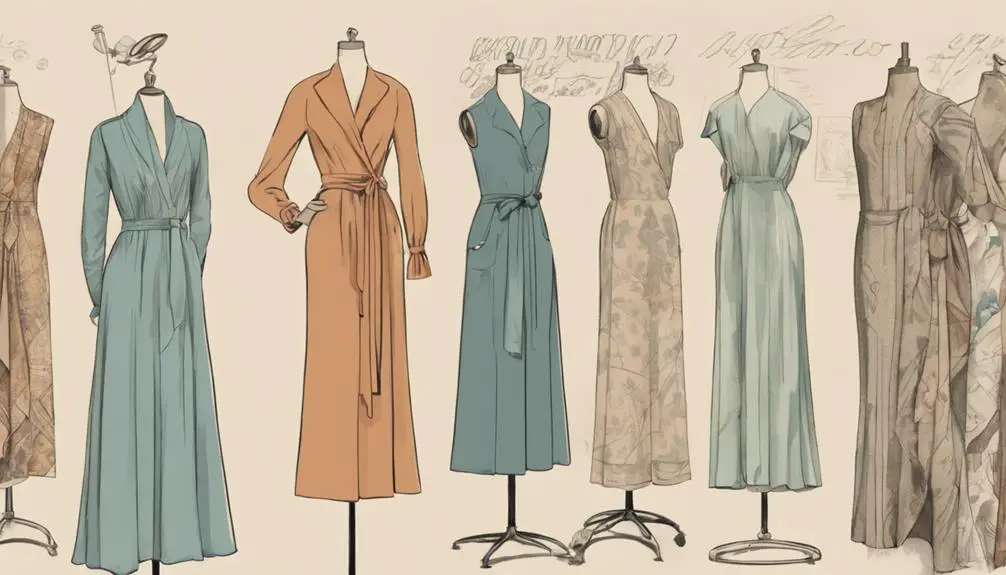
The wrap dress has fascinating historical origins that trace back to ancient Chinese garments like the jiaoling youren and jiaoling zuoren, which featured wrap-over neckline styles as early as the Shang dynasty (1600-1046 B.C.). Can you picture it? These early designs laid the groundwork for what we now know and love as the wrap dress! Over the centuries, the design evolved, taking inspiration from the Quju shenyi and Zhiju shenyi of the Han dynasty. This evolution reflects the timeless nature of wrap-style garments, which have been embraced in various cultures, similar to identifying vintage pieces that showcase the enduring appeal of classic designs.
But that's not all! The kimono from Japan shares similarities and was adopted through the Yoro Code in 718 AD, showing how cultures exchanged ideas and styles. Isn't it amazing how fashion travels through time and space?
Fast forward to the early 1970s, when Belgian designer Diane von Fürstenberg made history by introducing her iconic jersey wrap dress in 1973. Talk about a game changer! Her design quickly became a fashion staple, loved by women everywhere for its versatility and ease. The wrap dress wasn't just a pretty outfit; it symbolized empowerment and independence.
In the 1990s, the wrap dress saw a huge resurgence, selling millions and solidifying its status as a must-have. You've got to admire how something rooted in ancient history transformed into a modern wardrobe essential. So, next time you slip into a wrap dress, remember: you're wearing a piece of history that's stood the test of time! Isn't that cool?
Design Characteristics
Wrap dresses are celebrated for their unique design characteristics that make them both stylish and functional. The best part? They're super versatile! A classic wrap dress features a front closure that wraps one side across the other, often secured with a tie or belt at the waist. This not only enhances your silhouette but also lets you adjust the fit to your liking. You'll love how comfy and flattering it is, especially when made from stretchy fabrics like silk jersey. It hugs your curves while allowing you to move freely—perfect for days when you're on the go.
One of the standout features of a wrap dress is its V-neckline. This design element elongates your neck and emphasizes your waist, adding that touch of elegance we all adore. Plus, it's available in various lengths, like mini, midi, and maxi, so you can easily find one for any occasion. Whether you're heading to a casual brunch or a formal event, there's a wrap dress that'll fit the bill.
And let's not forget the fun variations! Some wrap dresses come with collars, sleeves, or might even be sleeveless, giving you countless styling options. So, whether you want to dress it up or keep it chill, you can express yourself with ease. Isn't that awesome? Grab a wrap dress, and you're ready to take on the world!
Cultural Significance

Emerging from the fashion scene in the 1970s, the wrap dress quickly became a symbol of women's empowerment and independence, mirroring the cultural shifts of the women's liberation movement. Can you imagine a time when women were stepping into the workforce, enthusiastic to showcase both their style and strength? That's where the wrap dress comes in! Its flattering design fits various body types, making it a go-to choice for women who wanted comfort without losing an ounce of style.
As influential figures like Michelle Obama and Madonna embraced the wrap dress, its status as a cultural icon only grew. With its ability to shift from day to night, it's no surprise that over a million dresses were sold by 1976! That's a lot of wrap dresses finding their way into closets!
But it's not just about looking good. The wrap dress also represents a pivotal moment in history, connecting fashion with the fight for women's rights. It embodies the spirit of those who dared to challenge norms, proving that style can indeed be a form of self-expression and empowerment.
Fashion Evolution
In the early 1970s, Diane von Furstenberg revolutionized women's fashion with her iconic wrap dress, blending style and comfort in a way that resonated deeply with working women. This American designer took inspiration from earlier styles, like Claire McCardell's casual wear and the wraparound tops of ballerinas, creating something truly special. The wrap dress became a versatile staple, perfect for women of all shapes and sizes and suitable for any occasion. Who wouldn't want a dress that could shift from the office to a night out?
The dress quickly gained immense popularity, with sales skyrocketing to 25,000 dresses per week at its peak. That's right, 25,000! By 1976, over one million wrap dresses had flown off the racks, solidifying DVF's status as a leading designer in fashion history. Think about that for a second—one million! It really showed how much women craved fashionable yet functional clothing.
Even today, the wrap dress has evolved, with modern variations popping up everywhere. But at its core, it still holds onto the characteristics that made it a timeless favorite. It's no wonder that this dress continues to inspire new collections and trends. Isn't it cool how something that started decades ago still plays a big role in today's fashion scene? So, whether you're dressing up for work or heading out for brunch, the wrap dress has your back. What's not to love?
Enduring Legacy
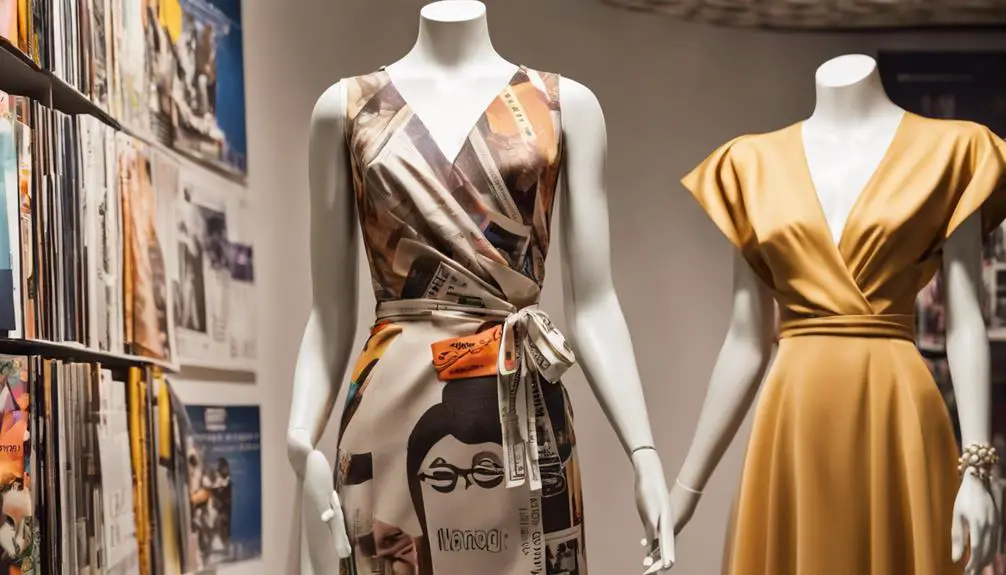
Today, the wrap dress frequently stands as a symbol of enduring style and empowerment in women's fashion. Can you believe it all started back in 1974? Diane von Furstenberg designed this amazing dress, and it quickly took the world by storm! By 1976, over one million units were sold, making it clear that women loved its versatility and flattering fit. Its success parallels the cultural impact of other fashion icons, like vintage Tommy Hilfiger pieces, which also defined eras through their unique styles.
What's so special about the wrap dress? For starters, it's got this timeless appeal that just never fades. You can dress it up for a fancy dinner or keep it casual for a day out with friends. It fits just right, allowing you to feel comfortable and confident, which perfectly embodies women's empowerment.
Fast forward to 2024, and we're celebrating the wrap dress's 50th anniversary. There's even a special capsule collection and a documentary showcasing Diane's incredible journey. Plus, when influential figures like Michelle Obama and Kate Middleton rock the wrap dress, you know it's more than just a passing trend.
The wrap dress adapts to today's styles while keeping that original spirit of elegance and comfort. It's like a friend that always knows how to make you feel good, no matter the occasion. So, whether you're heading to work or a weekend brunch, remember the wrap dress isn't just clothing; it's a celebration of independence and self-expression. Isn't that something worth wearing?
Frequently Asked Questions
Where Did the Wrap Around Dress Come From?
Imagine flowing fabrics and bold patterns, shaped by cultural influences. The wrap dress evolved through various designs, embraced by fashion icons who celebrated its versatility and style, creating a timeless symbol of modern femininity and independence.
Why Did Diane Von Furstenberg Invent the Wrap Dress?
Diane von Furstenberg invented the wrap dress to spark a fashion revolution. Drawing design inspiration from ballerinas, she aimed to create a garment that embodies women's empowerment, offering comfort and style for modern, independent women like you.
Why Was the Wrap Dress so Popular?
Picture a chameleon, effortlessly adapting to its surroundings. The wrap dress thrived during fashion evolution, thanks to celebrity influence and its versatility appeal, allowing you to shift from office to evening with ease and style.
Why Is It Called a Wrap Dress?
It's called a wrap dress because its design wraps fabric around your body, highlighting versatility. You can choose different fabrics and follow styling tips to create flattering looks for any occasion.
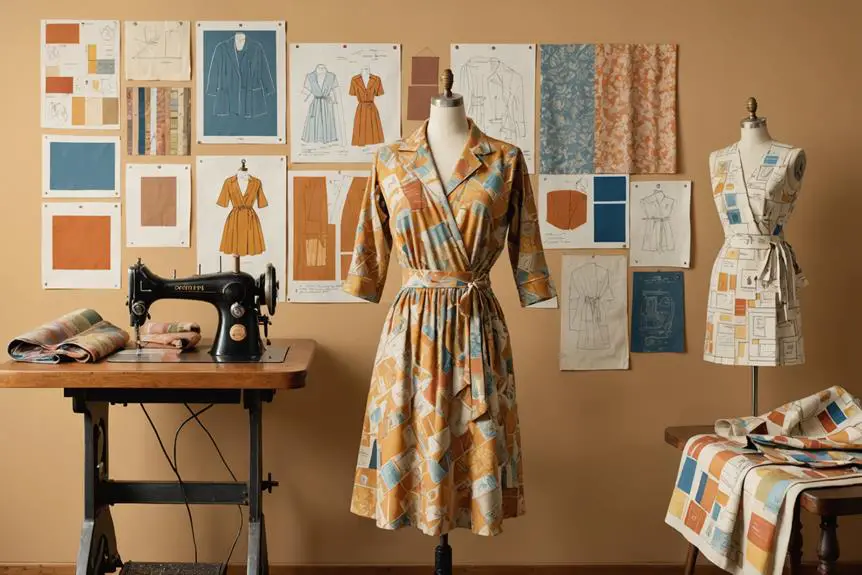


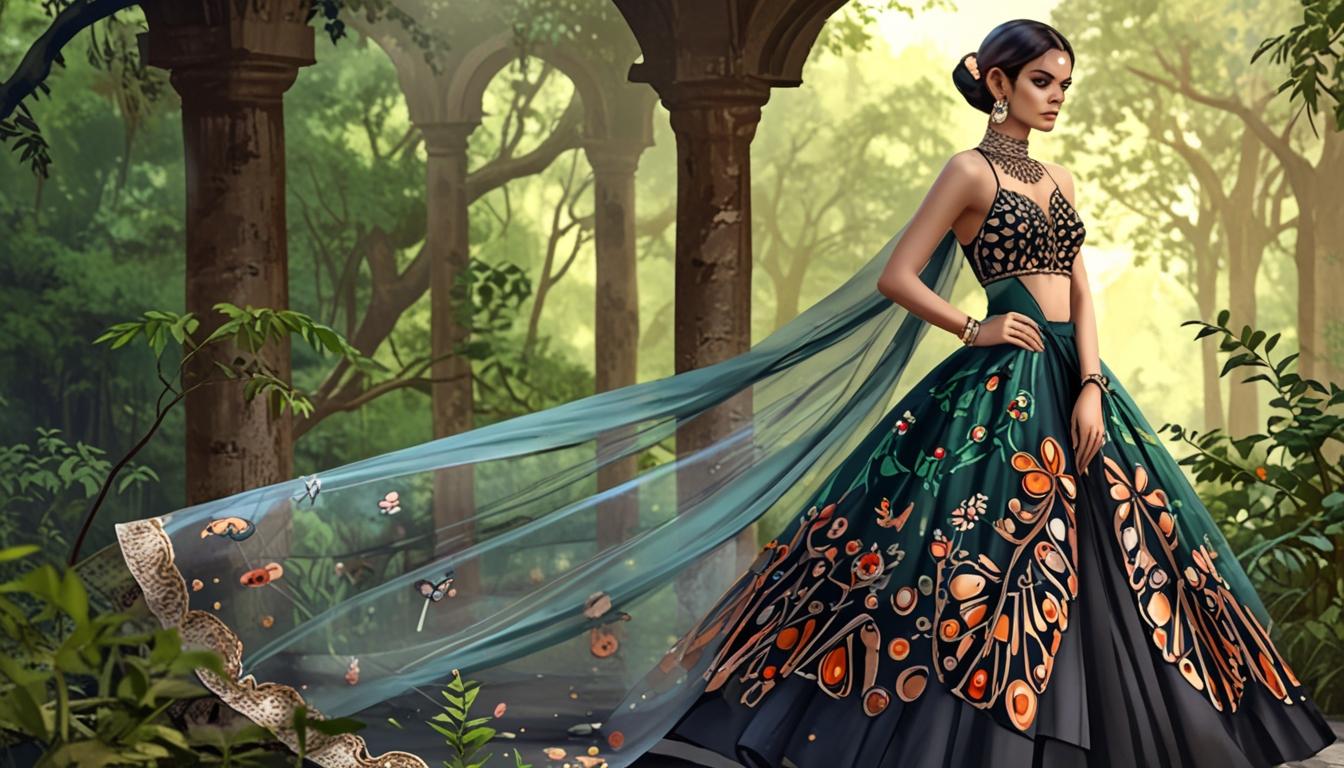
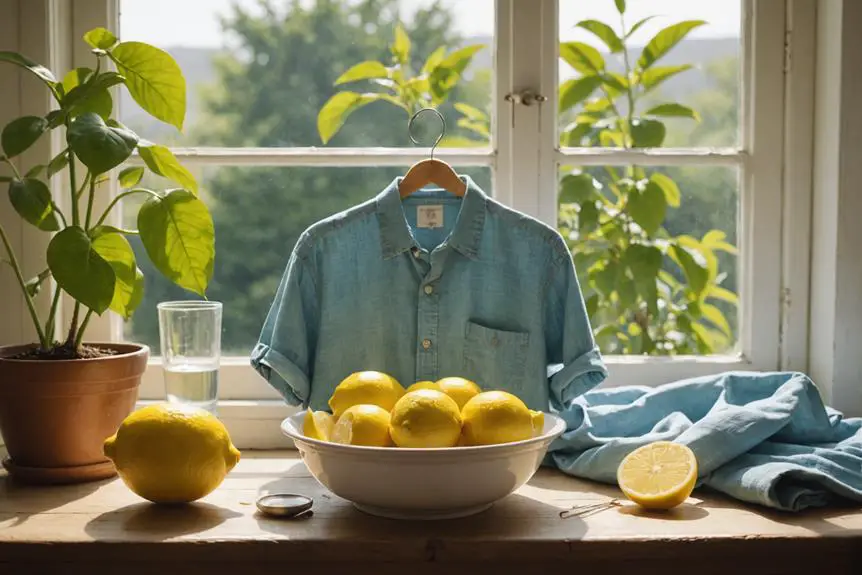
Loving the info on this web site, you have done great job on the blog posts.